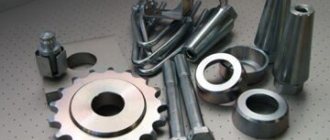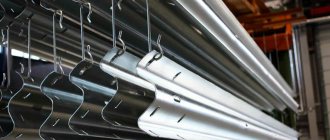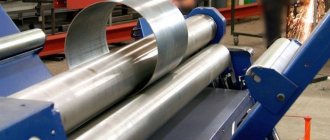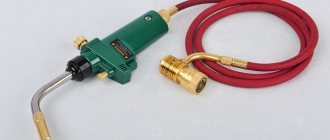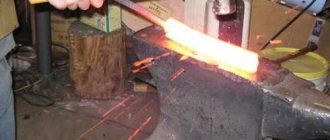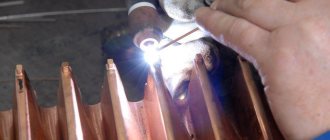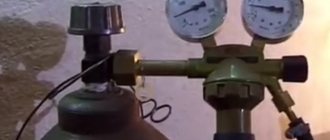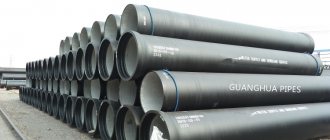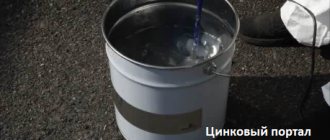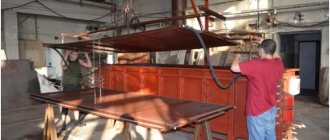Hot galvanizing is the most reliable, most effective and at the same time quite old method of protecting products from corrosive influences. Hot-dip galvanizing allows for reliable protection of the surface of metal structures from the damaging effects of the environment. A protective layer is formed on the elements, which evenly covers the parts, and its thickness ranges on average from 30 to 120 microns. A horizontal bath 13 m long, 1.8 m wide and 2 m deep makes it possible to galvanize large diameter pipes, power line supports and various metal structures. The average service life of galvanized products, depending on the conditions of their use, is 25-30 years.
Due to hot galvanizing, the coating is provided not only with a barrier, but also with electrochemical protection of the metal from corrosion. Galvanizing, which can be performed using different technologies, is used mainly in relation to steel.
In terms of cost and durability, hot zinc coating is superior to other types of galvanizing, such as electrochemical galvanizing. Hot galvanizing of metal, when compared with other technologies, is characterized by an optimal combination of the affordable cost of the technological process with the high protective properties of the resulting zinc layer. The coating applied by hot-dip galvanizing, even when the product is used in the most unfavorable conditions, can last a long time, while fully retaining its protective properties.
The essence of galvanizing
With any technology, its implementation comes down to protecting the metal from corrosion. Depending on the technique used, the protective layer can wrap the surface of the material, or additionally connect with it due to diffuse interaction.
Due to the properties of zinc, upon contact with atmospheric oxygen, an oxide film is instantly formed on its surface, which has a high density and strength, due to which it does not allow atmospheric oxygen to pass through to the metal and is not destroyed by mechanical stress.
Thus, the galvanized metal ends up in a reliable airtight shell, protecting it from destructive corrosion.
In the event of mechanical impact, the oxide film is damaged, the exposed zinc immediately interacts with atmospheric oxygen, which forms a new protective layer. Due to this property, galvanizing is called self-healing metal protection against corrosion.
Metal galvanizing methods
There are several methods of galvanizing metal, which have their own characteristics. The chosen method significantly influences, to one degree or another, the result obtained, since, depending on the scope of use of metal products and structures, it is not economically profitable to use all galvanizing technologies.
Galvanizing methods differ in the following properties:
Thickness of protective coating
— if for large metal structures the larger the layer of protection, the better, then for high-precision small parts it is necessary to use galvanizing, in which you can select and control the thickness of the anti-corrosion coating. Not every technology allows this to be realized.
Uniform thickness of galvanizing
- again, the smaller and more precise the metal part, the higher the requirements for the protective coating applied to it. For example, for a power line support, it does not matter how evenly it is covered with zinc, while for parts with holes, threads and chamfers, the uniformity of the zinc layer is extremely important.
Strength of retention of the protective coating on metal
— this parameter strongly depends on the method by which galvanizing was performed. So, for example, with hot zinc discussed below, it not only covers the surface of the product, but also connects with it at the molecular level, which significantly increases the strength of the protection on the metal.
Appearance of a galvanized part
— depending on the technology used, the surface layer of zinc oxide can be matte, glossy, and also vary in shades from dark gray to bluish.
Resistant to mechanical damage
— the higher this parameter, the longer the protection will last on products that are subjected to certain physical stress and aggressive factors.
Self-healing ability
- this ability depends on the thickness of the zinc deposited on the metal and the nature of the operation of the structure or product.
Corrosion resistance
- is a general property of a processed product, which consists of a combination of several factors. In particular, the resistance of a galvanized part to corrosion depends on the thickness of the zinc layer, its uniformity, retention strength, as well as resistance to mechanical damage and self-healing ability.
In modern industry, the most common galvanizing technologies are:
Hot
- performed by immersing the workpiece in molten zinc.
Cold
- carried out in absolute analogy with conventional painting by hand or by spraying.
Galvanic
— is implemented by immersing the workpieces in a zinc-containing electrolyte through which an electric current is passed.
Thermal diffusion
— a layer of protective coating is formed when the workpiece is placed in an environment saturated with powdered zinc.
Gas-thermal
— a gas burner is directed to the workpiece and zinc wire or zinc powder is supplied to the spot of greatest heating.
Let's look at the main advantages, disadvantages and hot-dip galvanizing technology
Features of the galvanizing procedure and the main methods of metal protection
Metal corrosion, or the process of its oxidation, is especially intensified in conditions of high humidity. To prevent corrosion of metal products, protective coatings are applied to them. Galvanizing of metal is considered one of the most reliable, since zinc takes on the effects of aggressive environments. Galvanizing provides not only barrier, but also electrochemical protection of the metal. During the reaction, an oxide layer appears on the surface of the part, which provides additional protection.
After mechanical destruction of the coating, the effect of the protective layer ceases. There are various types of metal galvanizing, many of them require complex and expensive equipment, but some can also be used at home.
Galvanized pipes
Galvanizing technology was first mastered in France in the 18th century and further developed in England. Domestic scientists Jacobi and Mendeleev made a great contribution to improving the process. Today, galvanizing metal is one of the most affordable ways to protect against corrosion.
Hot galvanizing
Hot zinc coating is carried out in accordance with GOST 9.307-89 “EZSKS, Hot zinc coatings.
General requirements and control methods." Extract from GOST 9.307-89 (clause 2. Coating requirements): 2.1. Appearance of the coating
2.1.1. Upon external inspection, the surface of the zinc coating should be smooth or rough, the coating should be continuous. The color of the coating ranges from shiny silver to matte dark gray.
2.1.2. There should be no cracks, nicks, or swelling on the surface of the products.
2.1.3. The presence of zinc deposits is unacceptable if they interfere with assembly. Grains of hartzink with a diameter of no more than 2 mm, surface rippling, light gray spots and tarnished colors, scratches, scratches, traces of being caught by lifting devices without coating to the base metal are not defects.
Restoration of uncovered areas is acceptable if they are no wider than 2 cm and constitute no more than 2% of the total surface area. Uncoated areas are protected with a layer of zinc-containing paint coating (minimum thickness 90 microns, mass fraction of zinc in the dry film 80%-85%) or thermal spraying of zinc (minimum thickness 120 microns).
General requirements
1.1. At the stage of preliminary negotiations, before concluding an additional agreement (or contract) to perform galvanizing work on metal structures, the Customer is obliged to transfer to the Contractor in order for the latter to determine the availability (absence) of the technical feasibility of galvanizing the following documents:
- A drawing or package of drawings in the KMD category, adapted only in Russian with overall dimensions and technical conditions for the implementation of anti-corrosion coating by hot-dip galvanizing in accordance with GOST 9.307 - 89;
- Foreign-made drawings (in English, German, Chinese and other languages are not accepted for approval);
- A certificate or certificates for the metal from which the product or metal structure is made, including a different assortment of metal products (angle, channel, I-beam, pipe, plate or circle).
1.2. The transferred metal structures must be marked in the form of a brand (product brand) corresponding to the brand specified in the shipping document. Metal structures must be transferred in packages (by brand and profile) equipped with tags. The tag must indicate the name of the Customer, the brand of the product (name), the number of pieces in the package, and the total weight of the package.
1.3. Metal structures made of low-carbon steels (ST 3 SP, 09 G2 S, ST 20, etc.) are accepted for galvanizing.
1.4. The overall dimensions of steel structure elements subject to zinc coating should be no more than: length - 12.5 m, width - 1.5 m and height - 3.0 m.
Requirements for the design of products to be galvanized (in accordance with GOST 9.307 - 89)
2.1. There should be no “pockets”, closed cavities or air pockets in metal structures; all cavities must be accessible for the unhindered entry and exit of liquids, molten zinc and gases.
2.2. Welding of elements of steel structures should be done end-to-end, either with double-sided seams, or with a one-sided seam with an underweld.
2.3. Welds must be uniform, tight and continuous along their entire length.
2.4. All parts of metal structures must have technological holes (both to fulfill the requirements of paragraph 2.1. and for hanging the products themselves). Technological holes should have a diameter of 15 to 30 mm and be located at a distance of 10 to 30 mm from the end of the part.
2.5. The location and feasibility of making technological holes in the design documentation provided by the Customer must be agreed upon with the Contractor and approved by the specialists of the Central Center of Design Center of ECM LLC before the parties enter into an additional agreement (or contract).
PAY SPECIAL ATTENTION!
2.6. Sealed containers, drums, pipe coils, units with threaded connections cannot be coated by hot-dip galvanizing.
2.7. To avoid explosion, it is not allowed to apply coating to products that have closed cavities.
2.8. Hollow products and products of complex shape are subjected to trial galvanizing.
2.9. It is not allowed to galvanize products with overlapping welded joints.
Requirements for the surface of the base metal (in accordance with GOST 9.307 – 89)
3.1. The following are not allowed on the surface of the base metal:
- rolled scale;
- hangnails;
- pores;
- inclusions (dirt, residues of abrasive material from mechanical processing);
- welding slags;
- molding mass residues;
- graphite;
- lubricant (silicone);
- metal shavings;
- marking paint;
3.2. Pores, fistulas, cracks and surface joints of welded seams are not allowed (cleaning of seams is mandatory).
3.3. Sharp corners and edges of products, except in technically justified cases, must be rounded with a radius of at least 0.3 mm.
Subject to the above requirements, the Contractor guarantees the application of the coating using the hot-dip galvanizing method in accordance with GOST 9.307 - 89.
This is interesting: Cold metal stamping: technology, types, equipment
Features of hot zinc coating
On steels with a high content of silicon and/or phosphorus (due to the heterogeneity of the chemical composition of the steel), (layers near the surface, surface structure, foreign inclusions), as well as on thick-walled products, different shades of coating are observed. The gray surface consists of a zinc-iron alloy exposed on the surface, while the lighter areas are pure zinc. In the case of steel with an unfavorable content of silicon and phosphorus, a significant thickening of the coating and a deterioration in its adhesion may occur; the visible effect of this phenomenon may be a rough surface with a gray and dark gray color, turning over time even into a brown tint.
The zinc surface on the same product may not be uniform; spots of varying degrees of gloss, gray dullness and roughness may appear. Since the surface localization of impurities in low-alloy steel leads to the fact that when rolling products from it, a significant difference appears in the content of silicon and phosphorus in different parts of the product.
However, this cannot be a defective sign, since, apart from the appearance, there are no negative aspects - it does not affect the service life of the coating, and after some time (within 1-1.5 years) the color of the structure will become the same).
White corrosion (white-gray spots that appear under the influence of atmospheric factors), as well as so-called “bloody streaks” (flux and acid residues in places of loose welding) are not grounds for claims about the quality of the galvanized surface.
The above problems are most typical for steel grade 09G2S, which is due to the peculiarities of their chemical composition.
The most common defects in the zinc coating for 09G2S steels, which are not grounds for filing claims:
1. Increased thickness of the resulting zinc coating.
2. Different thickness of zinc coating.
3. Increased formation of hard zinc.
4. Reduced adhesion of the zinc coating to the metal.
5. Reduced density of the zinc layer.
6. Appearance of the coating (lack of shine, unevenness, streaks, gray color).
Stages of the production process
When hot galvanizing a metal, the bond of zinc with the metal surface occurs at the molecular level. As a result of placing the element being processed in a galvanizing bath, the strongest possible molecular bonds are formed, ensuring the reliability of the coating during long-term operation of the product under conditions of varying complexity.
Processing technology involves several stages, including:
- Surface preparation. The processes of degreasing, washing, pickling and fluxing are carried out.
- Drying metal. Excess moisture is simultaneously removed from the metal surface and the material is heated to a temperature of about 100°C.
- Application of zinc. Occurs in a melt bath. Processing time depends on the specific production task, and takes from 3 to 10 minutes.
At the final stage of work, the galvanized metal is dried and undergoes strict control, confirming the quality of processing and compliance of the result with state standards. The fundamental criteria for the effectiveness of the method are the qualitative characteristics of zinc, melt temperature and the level of preliminary surface preparation. The technology requires strict adherence to the cooling regime, the speed of immersion and lifting of the product, which significantly influence the crystallization of the melt and the thickness of the formed zinc layer.
Zinc hardness
The strength of any paint coating is determined by the strength of the binder.
Varnishes by hardness, in accordance with international standards ISO 15184, ASTM D 3363, SIS 184187, NEN 5350, ECCA Test Method, are determined using pencil leads on a scale of 6B-5B-4B-3B-B-HB-F-H-2H -3H-4H-5H-6H-7Н-8Н-9Н, where 6B is the lowest hardness and 9H is the highest hardness. It has the same hardness as a 2T pencil.
The hardness of hot-dip galvanizing is equal to the hardness of the metal. Zinc. And under zinc we have iron.
According to the Mohs jewelry scale:
Talc (graphite) - 1
Lead - 1.5 Amber (gypsum) - 2 Zinc (aluminum, gold, silver) - 2.5-3 Copper - 3 Iron - 4 Steel - 5 Glass - 6 ... Diamond - 10
GALVANIZED
— Up to an outer diameter of 4”, two pipes are processed simultaneously.
— Pipes with a diameter of more than 4” are processed one at a time.
— When processing one or two pipes, all pipes exit from the same side.
— Internal pipe blowing can be done both horizontally and at an angle.
— The immersion unit is replaceable for quickly changing pipe sizes.
- The same screws are suitable for driving pipes with diameters from 2" to 3/8" to avoid screw replacement.
Technological cycle of hot-dip galvanizing
A complete hot-dip galvanizing process includes the following technological steps:
Loading of products requiring processing to the hanging area
. Since the method under consideration is one of the few that allows galvanizing relatively large parts, shipment is usually carried out using special overhead cranes.
Hanging metal structures
. For subsequent processing, parts delivered to production are hung on movable crossheads. Metal structures are distributed and fixed in such a way that the entire section can fit into technological containers at further stages. It is also important to hang the products so that they can come into contact with the liquids in which they will be immersed over the entire surface, without interfering with each other.
Pre-treatment of metal structures.
Before hot galvanizing, steel products undergo mandatory multi-stage preparation. It consists of alternately immersing a traverse with suspended parts in baths with process fluids. Including, in these baths, degreasing, cleaning, etching (which ensures the penetration of zinc into the crystal lattice of the metal), removal of traces of acid, and coating with protective flux are carried out. Also at this stage, the metal is preheated before immersion in molten zinc, which avoids deformation of products due to sudden temperature changes.
Drying and preheating
. It is carried out in a special multi-stage oven into which heated and purified air is supplied. As a result, before galvanizing, traces of preliminary preparation in baths of liquids evaporate from metal structures, and they are also heated additionally.
Galvanizing
. The main technological stage of the hot-dip galvanizing process. It is carried out by transporting a traverse with prepared metal products into a furnace closed on all sides, in which a bath of molten zinc is located. Its temperature is maintained at a constant level around +450°C using high-speed gas burners. The sealing of the furnace is necessary for two reasons.
Firstly, this is necessary to ensure the safety of people who work in production. Secondly, during the galvanizing process, gases heated to a high temperature are released, which need to be purified before being released into the atmosphere. In addition, the thermal energy of these gases is used again to heat process fluids at the stage of preliminary preparation of metal products.
Removal, sorting and shipment of galvanized metal structures
. Upon completion of the galvanizing process in a bath of molten zinc, the traverse with hanging products is automatically sent to the area for their removal and sorting, after which the metal structures are loaded onto transport for shipment to the customer.
Despite the apparent complexity of the described process, the hot-dip galvanizing method is one of the simplest and most cost-effective. In addition, thanks to the introduction of certain technological stages, it is possible to ultimately obtain anti-corrosion protection with numerous advantages compared to other galvanizing methods.
Advantages of the method
Hot galvanizing of metal structures, when compared with other technologies, has a number of significant advantages.
- Even parts with highly complex geometric shapes can be processed using this technology. In particular, this technology is actively used for pipe processing.
- Areas of zinc coating damaged as a result of mechanical impact can self-heal, and this can happen without outside intervention.
- Compared to other galvanizing methods, the hot-dip galvanizing method allows you to form a coating whose resistance when interacting with liquid media is 6 times higher. It is for this reason that this technology is used for processing pipes and various containers.
- Hot-dip galvanizing allows you to effectively eliminate many defects of the surface being treated, such as holes, pores, etc.
- The operation of pipes and other hardware that are coated with zinc using this technology requires minimal financial costs. Their surfaces, in particular, do not require regular painting, since they are already reliably protected from the effects of negative environmental factors. This is very important for pipes that are used in hard-to-reach places (in walls, underground, etc.).
Comparison of cost and performance of hot-dip galvanized steel with other protection methods
